As the weather warms and Spring arrives, green shoots are appearing all over the Lot. Some of the shoots belong to intentionally-placed perennials, while others do not. Trees, birds, and squirrels all have deposited seeds over last season. Weeds gone to seed because of my late-season-gardening “Meh” attitude are now appearing in the cracks between pavers, bare spots in mulch, and borders of beds I still have not formerly edged.
When I first started doing this gardening thing, I was intimidated by this Spring race toward the sunlight. What plants were supposed to be in the garden? Which plants were weeds? Which should I pull? I didn’t want to wait until the plant got too far along and possibly developed enormous taproots making it impossible to remove. Dandelions anyone?
This season I wanted to document some of the first garden weeds out of the gate. These photos were taken back in mid-April. Over the Winter, I purchased flip books from WMMGA through MSUE’s bookstore. An IPM Pocket Guide for Weed Identification in Nurseries and Landscapes by Steven A. Gower and Robert J. Richardson was a helpful guide.
Purple Deadnettle
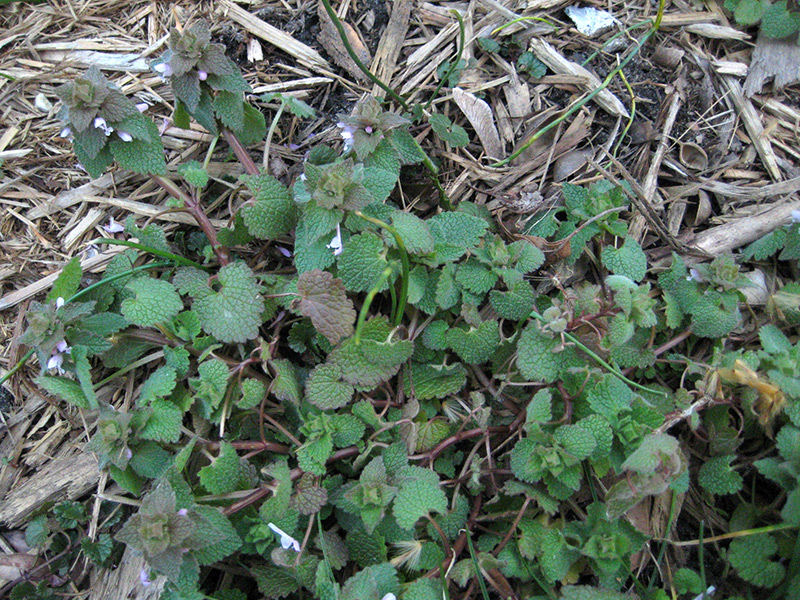
This first weed is purple deadnettle (Lamium purpureum L.), belonging to the Lamiaceae, or mint family. Persistence seems to be a family trait. The plant has square stems branching out from a central base with hairy leaves. An distinguishing trait belonging to this specific deadnettle is the blush of purple/red on the triangle-shaped leaves up near the flower.
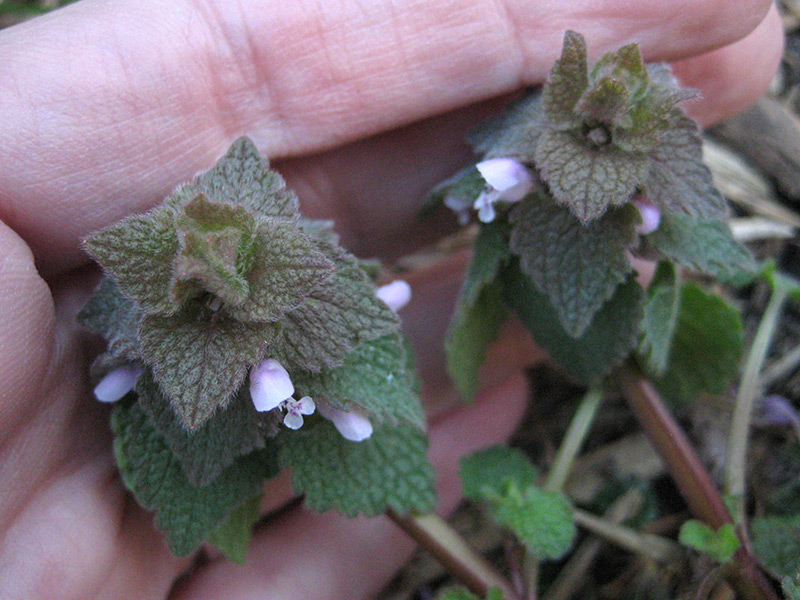
The weed is a broadleaf, winter annual. The seeds germinate in the fall in disturbed soil. I often see deadnettle on the Lot growing near the house foundation, near the borders of the still unedged garden beds, and in areas where the lawn is thin. According to the Purdue Extension, cultural control of the weed includes “proper mowing (higher mowing heights), proper fertilization (some rather than none to improve turf density), irrigation to prevent summer dormancy during drought, and aerification of compacted areas to improve turf health.” I usually hand pull it since it is not in an overwhelming quantity on the Lot.
Bitter Cress
This next weed has popped up all over the Lot this Spring. Either I had not noticed last season or I completely failed my Perception check. I don’t remember it running this rampant before.
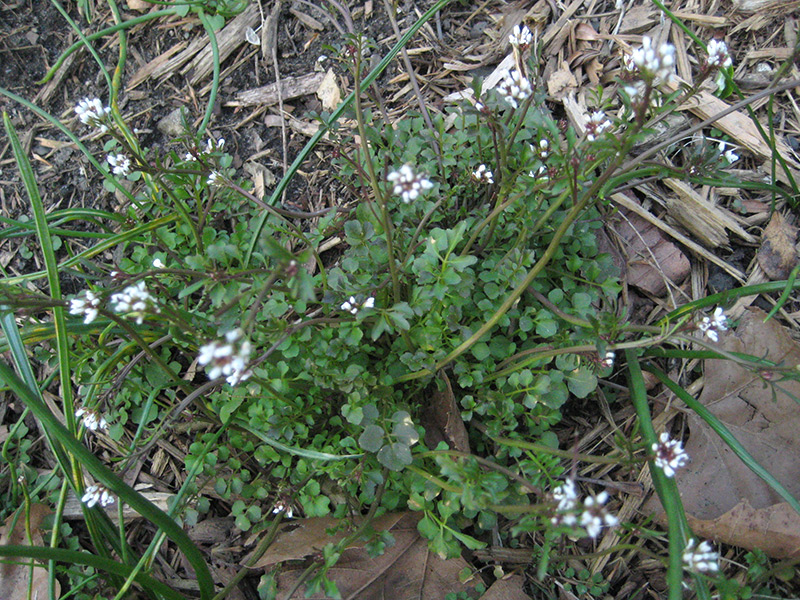
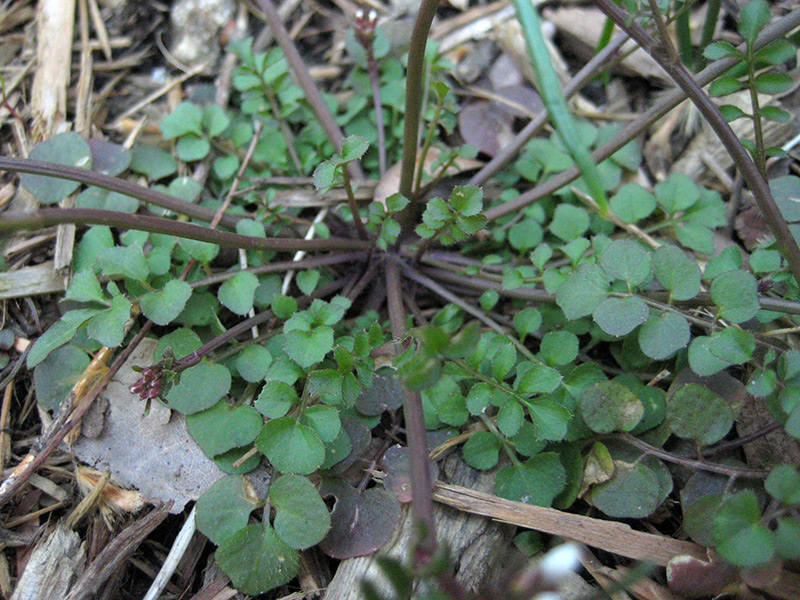
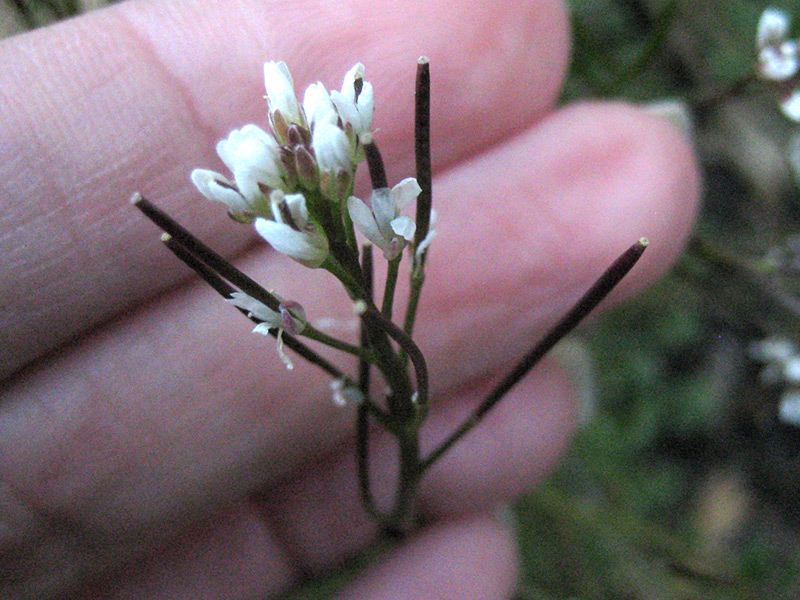
Cardamine parviflora (known also as Sand Bittercress, Dry Land Bittercress, and Small-flowered Bittercress) was a bit trickier to identify. I finally found it using the University of Wisconsin Weed ID Tool. Bittercress is also a winter annual. I’m seeing a theme here. However, the elongated seed pods on this one explode, sending the seeds flying away from the plant. Not only are they in mass quantity on the Lot, but they’re armed! Ugh.
Several sites noted Bittercress preferring more moist conditions where turf is thin and even favoring shade. It is a common weed in nurseries and greenhouses, then traveling home with unknowing gardeners in the containers of purchased plants. Cultural controls to manage this include mowing or hand pulling the plant before it sets seed or even before it flowers.
Shepard’s Purse
Finally, this weed was next to the garage foundation in a new bed created last Fall where there was no mulch.
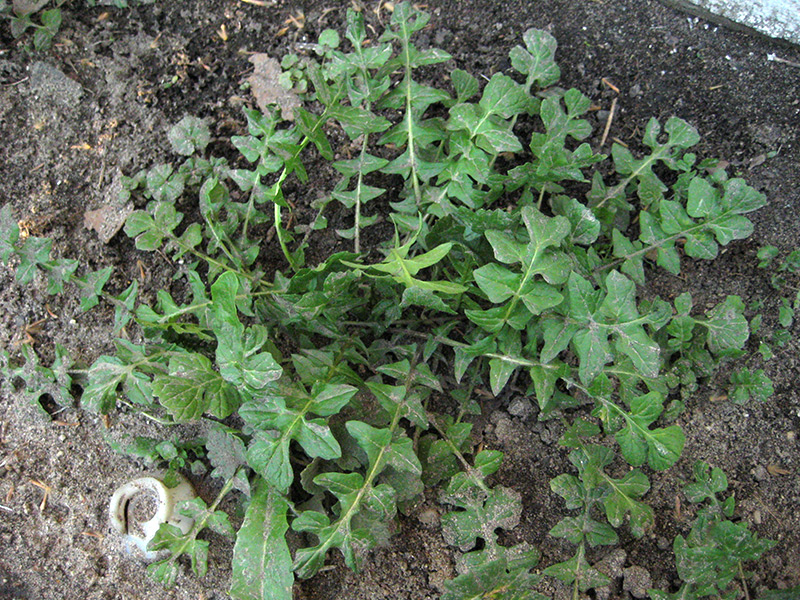
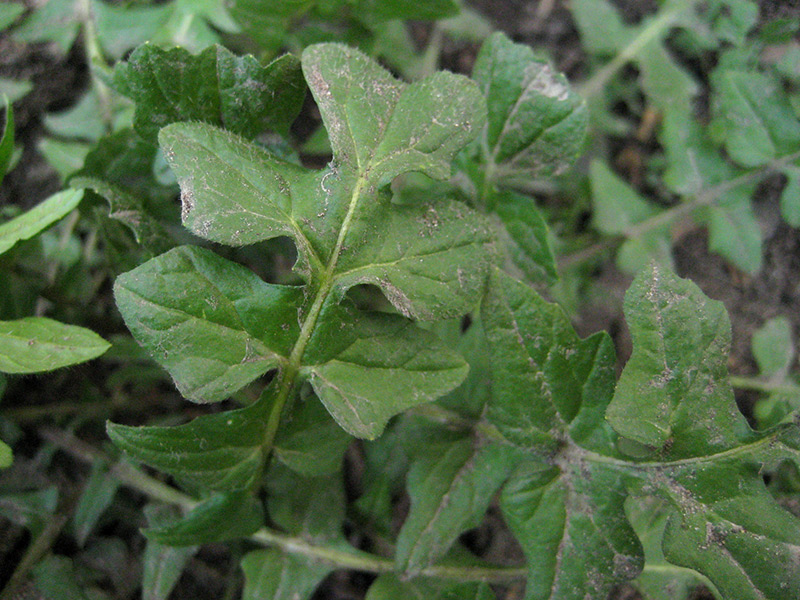
I identified it as shepherd’s purse (Capsella bursa-pastoris), yet another winter or summer annual usually found in an area of disturbed soil. MSU Extension Turf Weeds website says “Consistent mowing and patience are the key to managing shepherd’s purse.”
Can’t I Just Spray Them?
Using herbicides on unwanted weeds in the garden is a tricky task. In my experience, many home gardeners do not take the time to research the weed to eradicate. That leads to some pretty nasty consequences. In fact, when we first purchased the Lot, the previous homeowner told us a story of trying to spray for weeds in the backyard and how he succeeded in killing the entire lawn.
Yup. Grass is a plant too.
There are many factors to consider:
- What is the weed?
- How does it propagate?
- Where is it in its life cycle?
- What other plants around it can be affected?
- How long will the herbicide persist in the soil afterward?
And there are these guys too…
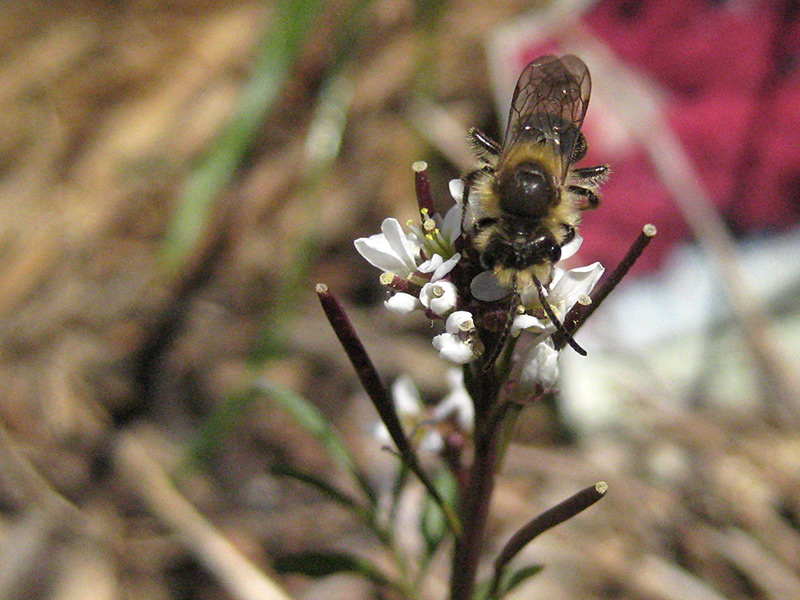
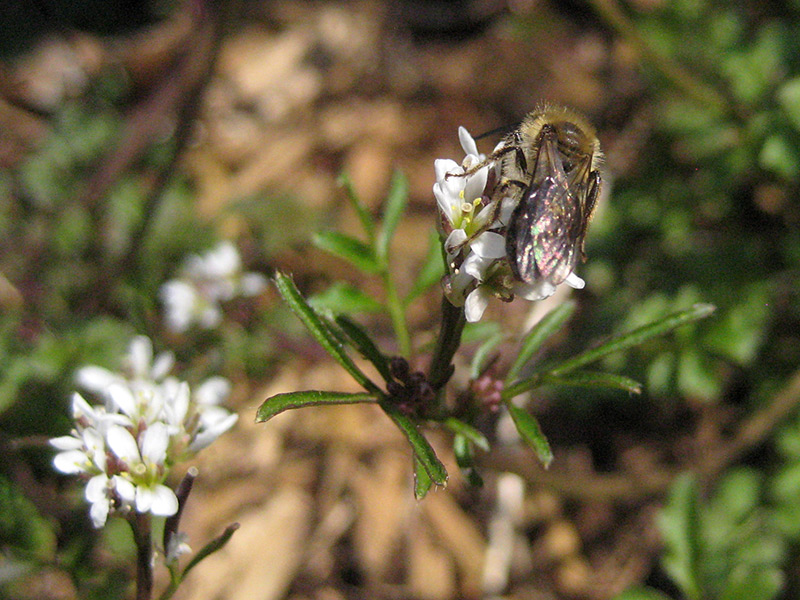
Here the bittercress is providing a food source for early Spring bees. In gardens with little to no blooms during this time, the weeds are available for the pollinators.
How Important Is “Weed-free?”
The Other Half and I had made the decision awhile ago not to use herbicides and pesticides on the Lot. We are not growing commercial crops. We love our pollinators, birds, toads, etc. We have four-footed garden management whom we do not want to poison. We have no use for a lawn.
In our situation, the only negative effect of these weeds are possible disapproving neighbors. We are lucky enough not to have to deal with the Joneses of suburbia, so I feel our little urban Lot is doing okay in that area as well. I continue to hand pull the weeds in the garden beds and eventually the others will be mowed and shaded out by the incoming lawn.
Good post, Stef! Maybe a future post can be on weeds that you can eat rather than kill (dandelion, purslane, garlic mustard, etc.).
Thank you! That’s a great suggestion. The dandelions are already on the way and I’ve had a friend interested in growing them to eat. I’ll try to include that in a future post.
My neighbors always comment on all my wonderful flowers growing – I just smile and say thank you – knowing they are looking at Purple Deadnettle, Binder Weed, and whatever weed has managed to blend in with the other flowers and escape my grab.
Oy with the Binder Weed! That was a real pain last season. It was everywhere. Glad to hear you have great neighbors who enjoy your direct and indirect gardening efforts. ^_~
This is perfect for the lazy beginner gardener who likes to know everything her smart experienced gardener friend knows but who, has not yet, managed to do any research on her own😊
Glad to help! I’ll try to ID another round of weeds as they appear. (I have a feeling that will not be long from now.)
The way you photographed those weeds show (most of) them to be quite pretty. I’ll tell you what isn’t: wild garlic!–Well, maybe later it would be, but….Gerry took up all the plants you so carefully planted last fall–they sit on our patio, and seem to be doing OK. Then he tried to turn the earth upside down with a tiller(?), but some garlic still came up. So he used Round Up. I know: shame on him…but I hope it works, and I hope he can replant.
Love your gardening blog!
Round-up is not going to help with wild garlic, especially at this time of year, and will be harmful to anything else around where he sprays. It’s horrible stuff. Tilling will break up and spread the bulbs even more. Hand digging (well, before the tilling) would have been the best way to go. It does require time, but the best way isn’t always the fastest and easiest.